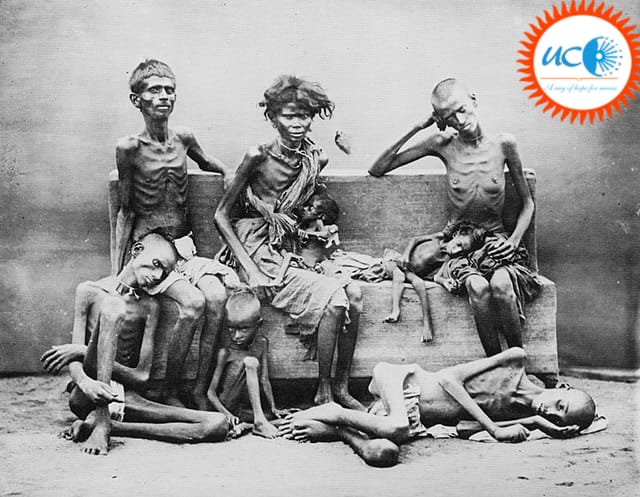Why was there a sudden spurt in famines in colonial India since the mid-eighteenth century? Give reasons.
The Latin word “Fames,” which means “hunger,” is where the word “famine” originates. “A state of extreme hunger experienced by a region’s population as a result of a lack of regular food supply,” is how famine is defined.
The Bengal famine of 1769–1770 occurred after two years of unpredictable weather, but it was made worse by a smallpox epidemic. The famine of 1783–1784 also followed widespread crop failure.
Drought:
- The people’s suffering from the previous year’s drought was not alleviated by the extreme rainfall in 1770; on the contrary, it led to river overflows and devastated standing crops.
- Famines were always triggered by a significant increase in food prices, which in turn reduced real earnings and led to epidemics, malnutrition, and hunger, particularly among groups of agricultural labourers.
Rural Indebtedness:
- Debt has always been a major component of India’s rural economy. Due to exorbitant rents and illegitimate taxation imposed by the British Government, peasants were heavily indebted, this indebtedness was exacerbated by the onset of severe drought-like circumstances which culminated in the onset of famines.
British Policy:
- The catastrophic famines were mostly brought on by the British policy of exploitation, repression, and oppression of the Indian people throughout the colonial era.
- Large-scale agricultural exports by the British to England led to a food scarcity in India and ultimately to a devastating famine.
- Cornwallis founded the permanent settlement in 1793. Due to this strategy, peasants lost control of their land for the first time in India’s agricultural history, and zamindars and talukdars became the true proprietors.
Famines that occurred during the colonial era had a tremendous influence on the economy and even the culture. Famines unquestionably had a negative impact on population growth and slowed down economic development.








